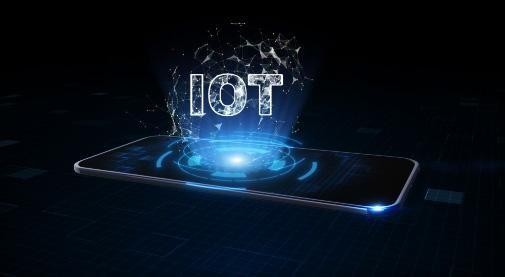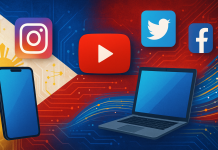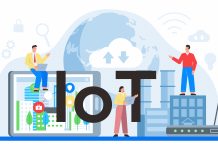COVID-19 has wreaked havoc on the global economy. The pandemic’s impact caused businesses to reassess their corporate strategies and tactics in response to the
lockdown situation.
Manufacturers of IoT solutions are no exception. Here are some noteworthy trends to keep an eye on.
Video Monitoring
The current state of video surveillance in GPS car tracking is a little out of date. Especially when compared to stationary video surveillance and the possibilities it offers, such as face and object identification. In the security market, technologies that give color images in the dark are gaining popularity. So how do cameras ensure visibility in adverse weather circumstances such as severe rain, snow, fog, or smog? They generate images using thermal imaging, which measures heat.
In most cases, video monitoring in telematics currently entails a simple video recording of everything in a row. For transportation, it isn’t exactly right. Managing the records of
thousands of hours of video from hundreds of cameras is nearly difficult. Users must obtain a segment of video from a specified event at a given time.
Although mobile communication networks are developing, their current capacity does not allow for a good channel for typical video transmission. On that front, 5G networks might be a game-changer. In addition, the capabilities of fifth-generation networks,
which are currently being deployed worldwide, could give telematics video monitoring a new lease on life. Regardless of the season, weather, or time of day, users want an uninterrupted and stable connection to their fleet camera systems.
BLE and Wireless Sensors
Bluetooth Low Energy (BLE) is a technique for wireless data transport. BLE is geared
toward new applications in healthcare, fitness, security, and home entertainment. As a technology, it is always growing, providing new prospects for wireless sensor makers. Compared to other technologies, BLE has many advantages, including long-range transmission and a rising number of sensors, and simple network deployment.
Furthermore, the standard’s adaptability has aided the development of a slew of new sensors and devices.
It’ll only be a matter of time until we witness many new and exciting devices and IoT
solutions that will broaden the scope of telematics services.
2G/3G to 4G LTE-M Transition

The number of IoT devices that are connected is constantly increasing. As a result, 2G and 3G networks are getting overburdened. A 4G LTE-M network is the solution. It’s an LPWA network option designed specifically for IoT devices. The low-power, long-range 4G LTE-M network meets the basic needs of IoT networks. The second reason is that many developed countries have already said that their 2G/3G networks will be turned off. Germany, for example, aims to turn off 3G by the end of the year.
What does this signify for makers of equipment? First, they must update their product portfolios to include new, advanced equipment capable of supporting next-generation networks. These IoT solutions will assist organizations in taking advantage of all the benefits that next-generation networks have to offer.
According to Fortune Business Insights™, the global 5G in aviation market size was valued at USD 0.2 billion in 2019, is projected to reach USD 4.2 billion by 2026, at a CAGR of 53.46% during the forecast period.
Eco-Driving
Eco-Driving is a concept aimed at assisting businesses in better managing their fleets
and ensuring the safety of their personnel. In essence, an Eco-driving system collects data on how the company’s drivers operate the company’s vehicles. Eco-Driving, for example, can inform a corporation when drivers speed up, brake hard, or drive
irresponsibly, causing parts and components to wear out. As a result, Eco-Driving has piqued the interest of insurance firms. Sensor data is being used for risk evaluations and incident investigations.
However, Big Data is the ultimate future of Eco-Driving. The more sophisticated the trackers are, the more data they can collect and the smarter and more effective services that can be produced in the future using this data. Autopilots and intelligent road
infrastructure are two examples of technologies that will be available in 2021.
This trend suggests new business areas and R&D directions for GPS tracker makers.
Increasing Complexity and Integration
The monitoring of transportation is growing more complicated. It used to be sufficient to
know a unit’s location and movement history. The list of responsibilities has grown significantly in recent years. Companies want to see the big picture and have complete control over their operations. As a result, modern telematics systems should not be considered separate from other platforms but rather an integral element of the overall IT ecosystem.
What does this imply for device makers? To begin, trackers should be more complicated to supply clients with a wider range of data. A contemporary tracker is a gadget that collects data from various sensors and components on a vehicle. In addition, it should be able to communicate with other systems and function with the car’s CAN-buses.
Addressing IoT hardware and IoT solutions makers necessitates developing
increasingly complex and intelligent trackers to collect data and integrate it easily into enterprise infrastructures.
The trends outlined above indicate that big changes in telematics equipment are on the way. And we’re likely to see completely new options on the market shortly.
Wrapping up
We all know that the IoT can transform the current mobile app development market trends. It is projected to bring up many opportunities for any company or individual
involved in this industry. Whether directly or indirectly, the IoT will shape the future of practically every business.
The trends listed above will likely dominate the IoT solutions environment in the coming years. However, amid all these predictions and trends, the future is promising and worth the wait.






